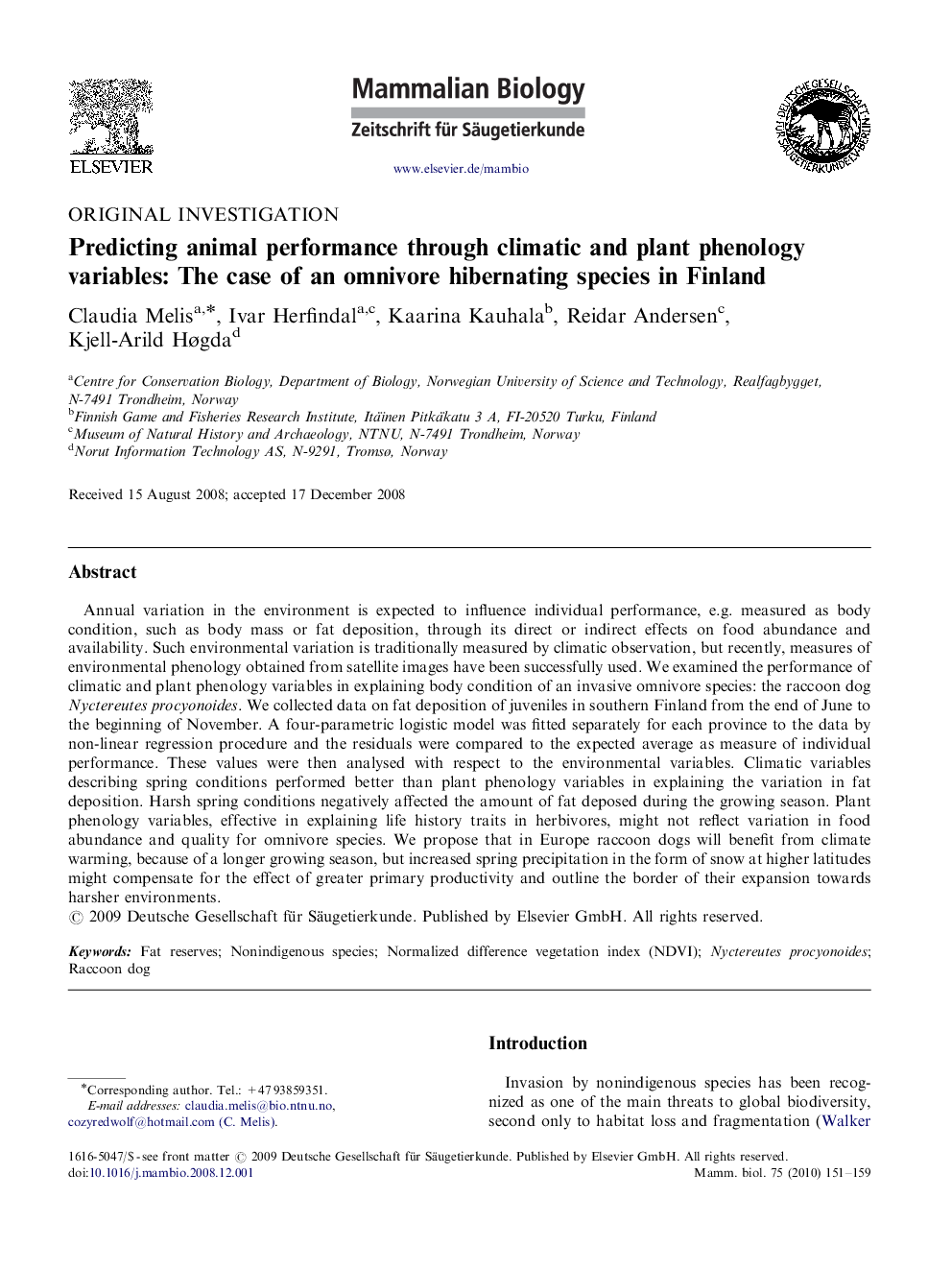| Article ID | Journal | Published Year | Pages | File Type |
|---|---|---|---|---|
| 2194107 | Mammalian Biology - Zeitschrift für Säugetierkunde | 2010 | 9 Pages |
Annual variation in the environment is expected to influence individual performance, e.g. measured as body condition, such as body mass or fat deposition, through its direct or indirect effects on food abundance and availability. Such environmental variation is traditionally measured by climatic observation, but recently, measures of environmental phenology obtained from satellite images have been successfully used. We examined the performance of climatic and plant phenology variables in explaining body condition of an invasive omnivore species: the raccoon dog Nyctereutes procyonoides. We collected data on fat deposition of juveniles in southern Finland from the end of June to the beginning of November. A four-parametric logistic model was fitted separately for each province to the data by non-linear regression procedure and the residuals were compared to the expected average as measure of individual performance. These values were then analysed with respect to the environmental variables. Climatic variables describing spring conditions performed better than plant phenology variables in explaining the variation in fat deposition. Harsh spring conditions negatively affected the amount of fat deposed during the growing season. Plant phenology variables, effective in explaining life history traits in herbivores, might not reflect variation in food abundance and quality for omnivore species. We propose that in Europe raccoon dogs will benefit from climate warming, because of a longer growing season, but increased spring precipitation in the form of snow at higher latitudes might compensate for the effect of greater primary productivity and outline the border of their expansion towards harsher environments.
